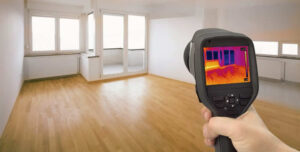Exactly how to Locate and Repair Work Water Leaks-- A Comprehensive Overview
Exactly how to Locate and Repair Work Water Leaks-- A Comprehensive Overview
Blog Article
What are your insights and beliefs about Leaking water lines?

Early detection of leaking water lines can mitigate a potential catastrophe. Some tiny water leaks may not be visible.
1. Examine the Water Meter
Every house has a water meter. Checking it is a surefire way that assists you find leakages. For starters, switch off all the water sources. Ensure no one will purge, use the faucet, shower, run the washing device or dishwashing machine. From there, most likely to the meter and watch if it will transform. Given that no person is utilizing it, there should be no movements. If it moves, that indicates a fast-moving leakage. Similarly, if you identify no changes, wait an hour or two and examine back once more. This suggests you may have a slow leakage that can also be below ground.
2. Check Water Usage
Assess your water bills and also track your water usage. As the one paying it, you ought to observe if there are any inconsistencies. If you spot sudden changes, despite your intake coinciding, it suggests that you have leaks in your plumbing system. Bear in mind, your water bill should fall under the very same variety every month. An abrupt spike in your costs suggests a fast-moving leakage.
Meanwhile, a consistent boost every month, despite the exact same routines, shows you have a slow-moving leak that's also gradually rising. Call a plumber to completely examine your building, especially if you really feel a warm location on your flooring with piping underneath.
3. Do a Food Coloring Test
When it comes to water usage, 30% comes from toilets. If the color in some way infiltrates your bowl throughout that time without flushing, there's a leak in between the container as well as bowl.
4. Asses Outside Lines
Do not fail to remember to examine your outside water lines also. Must water leak out of the connection, you have a loosened rubber gasket. One small leak can lose bunches of water and surge your water costs.
5. Examine and Evaluate the Scenario
Homeowners need to make it a routine to check under the sink counters as well as even inside closets for any bad odor or mold and mildew growth. These 2 warnings indicate a leakage so punctual interest is called for. Doing routine evaluations, also bi-annually, can conserve you from a significant problem.
Extra significantly, if you understand your residence is already old, maintain a watchful eye on your heaters, hoses, pipes etc. Look for stainings and damaging as a lot of devices and also pipes have a life span. They will certainly also naturally wear away because of wear and tear. If you believe leaking water lines in your plumbing system, don't await it to intensify. Call a specialist plumber as soon as possible so you don't end up with a horrible mess in your home.
Early detection of dripping water lines can alleviate a prospective calamity. Some little water leaks might not be noticeable. Examining it is a surefire method that helps you uncover leaks. One small leak can lose heaps of water and also increase your water bill.
If you suspect dripping water lines in your plumbing system, do not wait for it to intensify.
WARNING SIGNS OF WATER LEAKAGE BEHIND THE WALL
PERSISTENT MUSTY ODORS
As water slowly drips from a leaky pipe inside the wall, flooring and sheetrock stay damp and develop an odor similar to wet cardboard. It generates a musty smell that can help you find hidden leaks.
MOLD IN UNUSUAL AREAS
Mold usually grows in wet areas like kitchens, baths and laundry rooms. If you spot the stuff on walls or baseboards in other rooms of the house, it’s a good indicator of undetected water leaks.
STAINS THAT GROW
When mold thrives around a leaky pipe, it sometimes takes hold on the inside surface of the affected wall. A growing stain on otherwise clean sheetrock is often your sign of a hidden plumbing problem.
PEELING OR BUBBLING WALLPAPER / PAINT
This clue is easy to miss in rooms that don’t get much use. When you see wallpaper separating along seams or paint bubbling or flaking off the wall, blame sheetrock that stays wet because of an undetected leak.
BUCKLED CEILINGS AND STAINED FLOORS
If ceilings or floors in bathrooms, kitchens or laundry areas develop structural problems, don’t rule out constant damp inside the walls. Wet sheetrock can affect adjacent framing, flooring and ceilings.
https://www.servicemasterbyzaba.com/blog/how-to-detect-water-leakage-in-walls/

As a keen person who reads on Top leak detection hacks, I think sharing that information was important. Loved our article? Please share it. Help somebody else discover it. Bless you for your time. Please stop by our website back soon.
Report this page